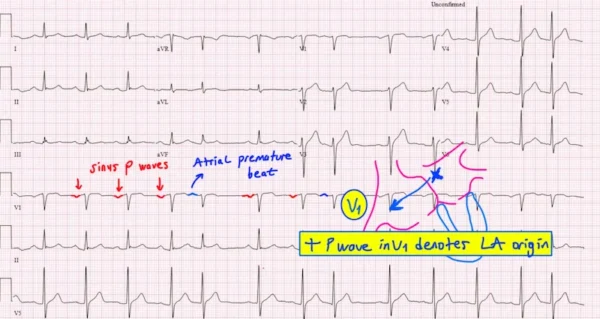Ventricular fibrillation, commonly called VFib, is a life-threatening heart rhythm in which the ventricles quiver chaotically instead of contracting in a coordinated way. When this happens, the heart is unable to pump blood to the brain and vital organs. Without immediate treatment, ventricular fibrillation leads to sudden cardiac arrest and death within minutes.
VFib is a medical emergency. Unlike many other arrhythmias, it does not cause prolonged warning symptoms and requires immediate action to be survivable.
What Happens During Ventricular Fibrillation
In a normal heartbeat, electrical signals travel through the ventricles in an organized pattern, producing a strong and effective contraction. In ventricular fibrillation, electrical activity becomes completely disorganized.
Instead of a single coordinated contraction, hundreds of chaotic impulses fire simultaneously. The ventricles no longer pump blood—they merely quiver. As a result, circulation stops abruptly, and loss of consciousness occurs within seconds.
Symptoms of Ventricular Fibrillation
Ventricular fibrillation usually begins suddenly and dramatically.
Typical presentation includes:
- Sudden collapse
- Loss of consciousness
- Absence of a pulse
- No effective breathing
In some cases, VFib may be preceded by brief warning symptoms such as chest pain, palpitations, dizziness, or shortness of breath, but these are often absent or very short-lived.
Why Ventricular Fibrillation Occurs
Ventricular fibrillation most often develops in the setting of significant heart disease. The most common cause is acute myocardial ischemia or heart attack, where lack of blood flow destabilizes the heart’s electrical system.
Other causes include prior heart attacks with scar tissue, cardiomyopathies, inherited electrical disorders, severe electrolyte abnormalities, and drug toxicity. VFib may also occur as a degeneration from Ventricular Tachycardia.
In some individuals, inherited arrhythmia syndromes such as Brugada Syndrome or long QT syndrome increase susceptibility to ventricular fibrillation, particularly under specific triggers.
How Ventricular Fibrillation Is Diagnosed
Diagnosis is made immediately based on the clinical situation and heart rhythm monitoring. On an electrocardiogram, VFib appears as a completely chaotic waveform with no recognizable QRS complexes.
Because VFib causes cardiac arrest, diagnostic efforts focus first on resuscitation. Once the patient is stabilized, further testing is performed to identify the underlying cause and prevent recurrence.
Emergency Treatment of Ventricular Fibrillation
The only effective immediate treatment for ventricular fibrillation is defibrillation.
Defibrillation delivers a controlled electrical shock to the heart, temporarily stopping chaotic electrical activity and allowing the heart’s normal rhythm to resume. Survival depends heavily on how quickly defibrillation is delivered.
Cardiopulmonary resuscitation (CPR) helps maintain minimal blood flow until defibrillation can be performed. Every minute without defibrillation significantly reduces the chance of survival.
This is why public access defibrillators (AEDs) and rapid emergency response are critical.
Preventing Recurrence After Survival
Patients who survive ventricular fibrillation are at high risk of recurrence. Long-term management focuses on preventing another life-threatening event.
In most cases, implantation of an Implantable Cardioverter-Defibrillator is recommended. An ICD continuously monitors heart rhythm and can immediately detect and terminate VFib with a life-saving shock.
Treating the underlying cause—such as coronary artery disease, heart failure, or inherited arrhythmia syndromes—is equally important. Medications, revascularization procedures, or catheter ablation may be used as part of a comprehensive prevention strategy.
Living After Ventricular Fibrillation
Surviving VFib is a life-changing event. Emotional recovery is as important as physical healing. Many survivors experience anxiety or fear of recurrence, which is normal and should be addressed as part of care.
With modern emergency response systems, ICD therapy, and appropriate medical follow-up, many people who survive ventricular fibrillation can return to active and meaningful lives.
In Summary
Ventricular fibrillation is a chaotic and fatal heart rhythm that causes sudden cardiac arrest. Immediate defibrillation is essential for survival. While VFib is often associated with underlying heart disease, modern therapies—including ICD implantation—allow effective prevention of recurrence and significantly improve long-term outcomes.
Reference: Ventricular Fibrillation (VFib)







